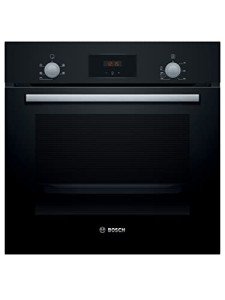14 Questions You're Afraid To Ask About Built In Oven And Hob
The Modern Kitchen: A Guide to Built-In Ovens and Hobs
In today's fast-paced world, where cooking has ended up being an innovative outlet and a crucial part of every day life, having the best kitchen appliances is vital. Among these, built-in ovens and hobs stick out as favorites in modern kitchens. This short article intends to explore these appliances in depth, discussing their benefits, types, installation alternatives, and essential pointers for choosing the best designs for your kitchen.
Comprehending Built-In Ovens and Hobs
What are Built-In Ovens?
A built-in oven is a home appliance that is created to fit seamlessly into kitchen cabinetry, supplying a clean aesthetic in the kitchen. They differ from freestanding ovens and are known for their adaptability, offered in numerous sizes and performances. Built-in ovens can be electric, gas, and even steam ovens, making them suitable for various cooking designs.
What are Hobs?
Hobs, likewise known as cooktops, are the flat cooking surface areas usually located on the countertop. Like ovens, hobs are available in numerous types, including gas, electric, induction, and even integrated designs. Their compact nature enables versatility in kitchen layouts and styles.
Table 1: Comparison of Built-In Ovens and Hobs
Feature
Built-In Oven
Hob
Setup Type
Integrated into kitchen cabinets
Set up on countertop
Cooking Methods
Baking, roasting, steaming
Boiling, frying, sautéing
Types
Single, double, mix
Gas, electric, induction
Aesthetics
Modern, smooth styles
Numerous finishes offered
Control
Digital shows, handbook
Knob or touch control
Cost Range
Mid to high-range
Wide, depending upon type
Benefits of Built-In Ovens and Hobs
Aesthetic Appeal
Built-in ovens and hobs contribute considerably to a streamlined look in contemporary kitchens. Their integration into cabinets permits a tidy and expert surface that matches any kitchen design.
Space-Saving Design
Among the pivotal advantages of built-in ovens and hobs is their space-saving design. As they are fitted straight into cabinets, they maximize important counter space, making the kitchen feel bigger and more organized.
Flexibility in Cooking Methods
Built-in ovens included numerous cooking functions, such as convection, barbecuing, and self-cleaning alternatives. Similarly, integrated ovens and hobs provide varied cooking techniques, including quick boiling with induction innovation or the standard flame of gas hobs. This adaptability allows home cooks to experiment with a vast array of cooking methods.
Improved Safety Features
Many modern-day built-in hobs and ovens included innovative safety features, such as automated shut-off, cool-touch doors, and child locks. These features improve safety, especially in households with kids.
Choosing the Right Built-In Oven and Hob
Selecting the right built-in oven and hob for your kitchen involves numerous considerations:
Factors to Consider
- Kitchen Layout: Understand the flow and style of your area to pick appliances that fit your design.
- Cooking Habits: Are you a casual cook, or do you prepare complicated meals? Understanding your cooking needs will assist your selection.
- Spending plan: Building a budget plan will assist limit your alternatives without overspending.
- Utilities Available: Check if you have access to gas lines for a gas hob or if you prefer electric choices.
- Energy Efficiency: Look for energy-efficient models that can save money on electrical power or gas expenses over time.
Types of Built-In Ovens and Hobs
Built-In Ovens
- Single Ovens: Ideal for smaller kitchen areas or casual cooks.
- Double Ovens: Great for those who often captivate or cook several dishes at the same time.
- Combination Ovens: Feature both conventional and microwave performances.
Hobs
- Gas Hobs: Perfect for those who prefer the control of open flames.
- Electric Hobs: Common and simple to utilize, however might take longer to warm up.
- Induction Hobs: Quick heating and energy-efficient, but require suitable cookware.
Frequently asked question Section
**Q1: Are built-in ovens more expensive than freestanding ovens?A1: Generally, built-in ovens are more costly due to their design and installation requirements. However, the rate can vary based upon functions and brand names. Q2: Can I install a built-in oven myself?A2: While DIY
installation is possible, it is recommended to work with an expert for gas and electrical connections to ensure safety and compliance with local codes. Q3: What maintenance do built-in ovens and hobs require?A3: Regular cleansing is necessary. Hobs may require periodicdescaling, and ovens can take advantage of self-cleaning functions if**
available. Q4: How do I pick in between gas and electric hobs?A4: Consider your cooking choices, available utility connections, and safety functions.**
If you value precise temperature control, gas might be the
right option. For fast heating, electric or induction might be better. Q5: What are the energy performance scores of built-in ovens and hobs?A5: Most modern-day built-in ovens and hobs included energy scores, similar to other appliances.
Look for those with high rankings to minimize energy costs. In summary, built-in ovens and hobs are important parts of a stylish and practical modern-day kitchen. Their range, security functions, and aesthetic appeal make them an attractive choice for property owners and striving chefs alike. By thoroughly considering your cooking routines, kitchen design, and design preferences, you can pick the ideal built-in appliances that boost your cooking experience and change your kitchen into a cooking sanctuary. The financial investment in these appliances not just includes value to your home however likewise raises your cooking to new heights.  **
**